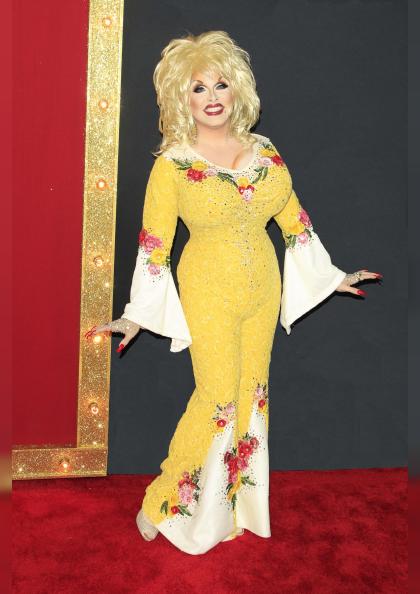Breaking Stereotypes: Diversity and Inclusion in TV Shows
Television, as a powerful medium of storytelling, has the ability to shape perceptions, challenge norms, and influence societal attitudes. In recent years, there has been a noticeable shift towards greater diversity and inclusion in TV shows, reflecting a growing awareness of the importance of authentic representation. In this exploration, we delve into how television is breaking stereotypes and embracing diversity to create richer, more nuanced narratives.
Breaking Stereotypes: Diversity and Inclusion in TV Shows
Television, as a powerful medium of storytelling, has the ability to shape perceptions, challenge norms, and influence societal attitudes. In recent years, there has been a noticeable shift towards greater diversity and inclusion in TV shows, reflecting a growing awareness of the importance of authentic representation. In this exploration, we delve into how television is breaking stereotypes and embracing diversity to create richer, more nuanced narratives.


Representing Diversity Authentically
1. Racial and Ethnic Diversity: TV shows are increasingly incorporating characters from a variety of racial and ethnic backgrounds, moving beyond tokenism to present authentic and multifaceted portrayals. This shift allows viewers to see a more accurate reflection of the world's diversity.
2. LGBTQ+ Representation: The inclusion of LGBTQ+ characters and storylines has expanded, contributing to a more inclusive television landscape. TV shows are exploring diverse aspects of the LGBTQ+ experience, fostering understanding and acceptance.
3. Gender Diversity and Empowerment: Traditional gender roles are being challenged as TV shows feature strong, complex characters that defy stereotypes. Women are portrayed as leaders, decision-makers, and individuals with agency, contributing to a more balanced representation.
Representing Diversity Authentically
1. Racial and Ethnic Diversity: TV shows are increasingly incorporating characters from a variety of racial and ethnic backgrounds, moving beyond tokenism to present authentic and multifaceted portrayals. This shift allows viewers to see a more accurate reflection of the world's diversity.
2. LGBTQ+ Representation: The inclusion of LGBTQ+ characters and storylines has expanded, contributing to a more inclusive television landscape. TV shows are exploring diverse aspects of the LGBTQ+ experience, fostering understanding and acceptance.
3. Gender Diversity and Empowerment: Traditional gender roles are being challenged as TV shows feature strong, complex characters that defy stereotypes. Women are portrayed as leaders, decision-makers, and individuals with agency, contributing to a more balanced representation.
4. Disability Representation: Television is increasingly recognizing the importance of representing individuals with disabilities. Characters with disabilities are being portrayed in diverse roles, highlighting their abilities and challenging misconceptions.
Breaking Cultural Stereotypes
1. Cultural Authenticity: TV shows are embracing cultural authenticity by consulting with experts, hiring diverse writers and consultants, and paying attention to the nuances of language, customs, and traditions. This approach helps break stereotypes and fosters a deeper understanding of different cultures.
2. Subverting Stereotypes Through Storylines: Television is challenging cultural stereotypes by subverting expected storylines. Instead of relying on clichés, TV shows are presenting narratives that explore the complexity of characters and their cultural backgrounds.
3. Intersectionality in Characters: The acknowledgment of intersectionality, where characters embody multiple identities and experiences, is becoming more prevalent. TV shows are exploring how different aspects of identity intersect, creating characters with layered and nuanced stories.
4. Historical Accuracy and Revisionism: Some TV shows are revisiting historical events and figures to provide a more accurate and inclusive representation of the past. This revisionist approach challenges traditional narratives and promotes a broader understanding of history.
4. Disability Representation: Television is increasingly recognizing the importance of representing individuals with disabilities. Characters with disabilities are being portrayed in diverse roles, highlighting their abilities and challenging misconceptions.
Breaking Cultural Stereotypes
1. Cultural Authenticity: TV shows are embracing cultural authenticity by consulting with experts, hiring diverse writers and consultants, and paying attention to the nuances of language, customs, and traditions. This approach helps break stereotypes and fosters a deeper understanding of different cultures.
2. Subverting Stereotypes Through Storylines: Television is challenging cultural stereotypes by subverting expected storylines. Instead of relying on clichés, TV shows are presenting narratives that explore the complexity of characters and their cultural backgrounds.
3. Intersectionality in Characters: The acknowledgment of intersectionality, where characters embody multiple identities and experiences, is becoming more prevalent. TV shows are exploring how different aspects of identity intersect, creating characters with layered and nuanced stories.
4. Historical Accuracy and Revisionism: Some TV shows are revisiting historical events and figures to provide a more accurate and inclusive representation of the past. This revisionist approach challenges traditional narratives and promotes a broader understanding of history.
Inclusive Storytelling in Genres
1. Diversity in Genres Beyond Dramas: While dramas have been at the forefront of diverse storytelling, other genres like science fiction, fantasy, and comedy are also embracing inclusivity. This expansion allows for diverse representation in a variety of storytelling formats.
2. International and Multilingual Shows: The rise of international and multilingual shows contributes to a more global perspective. These shows not only provide diverse cultural narratives but also feature casts and characters from different parts of the world.
3. Diverse Family Structures: TV shows are portraying a broader spectrum of family structures, moving away from traditional models. This includes showcasing single-parent families, LGBTQ+ families, and non-nuclear family dynamics, reflecting the diversity of real-life households.
Inclusive Storytelling in Genres
1. Diversity in Genres Beyond Dramas: While dramas have been at the forefront of diverse storytelling, other genres like science fiction, fantasy, and comedy are also embracing inclusivity. This expansion allows for diverse representation in a variety of storytelling formats.
2. International and Multilingual Shows: The rise of international and multilingual shows contributes to a more global perspective. These shows not only provide diverse cultural narratives but also feature casts and characters from different parts of the world.
3. Diverse Family Structures: TV shows are portraying a broader spectrum of family structures, moving away from traditional models. This includes showcasing single-parent families, LGBTQ+ families, and non-nuclear family dynamics, reflecting the diversity of real-life households.


4. Authentic Regional Representations: TV shows are paying attention to authentic regional representations, avoiding stereotypical portrayals of specific locations and communities. This approach fosters a deeper connection between viewers and the stories being told.
Challenges and Future Aspirations
1. Addressing Tokenism: While progress has been made, the challenge of avoiding tokenism persists. Meaningful inclusion requires more than just representation; it necessitates authentic storytelling that reflects the richness of diverse experiences.
2. Breaking Through Industry Barriers: Industry barriers, such as the lack of diverse decision-makers and gatekeepers, continue to pose challenges. Breaking through these barriers involves creating opportunities for underrepresented voices in key creative roles.
3. Intersectionality and Complexity: As television embraces diversity, the challenge is to ensure that characters embody intersectionality and complexity. Avoiding one-dimensional portrayals and allowing characters to evolve and grow is crucial for authentic representation.
4. Continued Advocacy and Awareness: Advocacy and awareness are essential for sustaining progress. Continued efforts to raise awareness about the importance of diversity and inclusion in TV shows will drive further change within the industry and among audiences.
Television, as a mirror reflecting societal norms and values, plays a pivotal role in shaping perspectives. The ongoing efforts to break stereotypes and embrace diversity in TV shows signify a positive shift towards a more inclusive and representative media landscape. As the industry continues to evolve, the hope is that the diverse narratives being woven on screen will not only challenge stereotypes but also contribute to a more empathetic and understanding society.
4. Authentic Regional Representations: TV shows are paying attention to authentic regional representations, avoiding stereotypical portrayals of specific locations and communities. This approach fosters a deeper connection between viewers and the stories being told.
Challenges and Future Aspirations
1. Addressing Tokenism: While progress has been made, the challenge of avoiding tokenism persists. Meaningful inclusion requires more than just representation; it necessitates authentic storytelling that reflects the richness of diverse experiences.
2. Breaking Through Industry Barriers: Industry barriers, such as the lack of diverse decision-makers and gatekeepers, continue to pose challenges. Breaking through these barriers involves creating opportunities for underrepresented voices in key creative roles.
3. Intersectionality and Complexity: As television embraces diversity, the challenge is to ensure that characters embody intersectionality and complexity. Avoiding one-dimensional portrayals and allowing characters to evolve and grow is crucial for authentic representation.
4. Continued Advocacy and Awareness: Advocacy and awareness are essential for sustaining progress. Continued efforts to raise awareness about the importance of diversity and inclusion in TV shows will drive further change within the industry and among audiences.
Television, as a mirror reflecting societal norms and values, plays a pivotal role in shaping perspectives. The ongoing efforts to break stereotypes and embrace diversity in TV shows signify a positive shift towards a more inclusive and representative media landscape. As the industry continues to evolve, the hope is that the diverse narratives being woven on screen will not only challenge stereotypes but also contribute to a more empathetic and understanding society.































